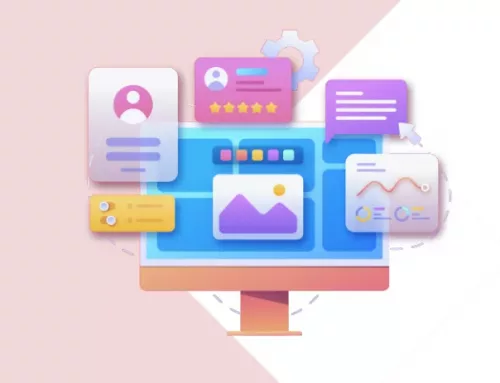6 Ways to Streamline Your Hiring Process and Find the Right Professional
Hiring the right talent is one of the most critical aspects of building a successful business. However, the hiring process can often be time-consuming, inefficient, and costly if not managed properly. Many companies struggle with long recruitment timelines, unqualified applicants, and high turnover rates, all of which impact productivity and business growth.
By streamlining the hiring process, businesses can attract top talent more efficiently, reduce recruitment costs, and ensure they find the best fit for each role. Implementing strategic improvements in recruitment helps organizations remain competitive in the job market while enhancing the candidate experience.
Defining Job Roles Clearly Before Recruitment
A vague job description can lead to an influx of unqualified candidates and slow down the hiring process. Many companies make the mistake of using generic job postings that fail to outline the specific responsibilities, skills, and expectations for the role. This lack of clarity creates confusion for both hiring managers and applicants.
A well-defined job description should include essential qualifications, required experience, and key performance expectations. Clearly stating job duties and growth opportunities helps attract candidates who align with the role and reduces the number of unsuitable applications.
In addition to listing responsibilities, companies should highlight what makes the organization unique. A compelling job posting that reflects company culture and values ensures that applicants understand what to expect from the work environment before applying.
Utilizing AI and Automation in Recruitment
Traditional hiring processes often involve time-consuming tasks such as screening resumes, scheduling interviews, and conducting background checks. Automation tools and artificial intelligence have transformed recruitment by speeding up these processes and improving accuracy.
AI-powered applicant tracking systems (ATS) filter through large volumes of resumes, identifying the most qualified candidates based on specific criteria. Automated scheduling tools streamline the interview process by coordinating availability between hiring managers and applicants. Chatbots and AI-driven assessments further assist in pre-screening candidates, ensuring only the most suitable applicants proceed to the next stage.
Leveraging automation not only saves time but also enhances the candidate experience. Quick responses, structured assessments, and smooth scheduling contribute to a more efficient and professional recruitment process.
Expanding Talent Reach Through Multiple Channels
Relying solely on job boards limits the pool of qualified candidates. Many top professionals are not actively searching for jobs but may be open to new opportunities if approached through the right channels. Expanding recruitment efforts beyond traditional job postings increases the chances of finding the ideal candidate.
Social media platforms such as LinkedIn, Twitter, and industry-specific networks provide direct access to professionals who match job criteria. Employee referrals are another valuable resource, as current employees often know highly skilled individuals who would be a great fit for the organization. Working with specialized talent partners like HelloKindred, and other similar ones can also help companies identify professionals with the right expertise and cultural alignment. Leveraging multiple channels ensures that businesses reach a diverse pool of qualified candidates, reducing hiring timelines and improving the quality of new hires.
Improving the Candidate Screening Process
An inefficient screening process often leads to wasted time and resources. Many hiring managers rely too heavily on resumes and traditional interviews without assessing candidates’ true capabilities. A structured screening strategy helps identify the best candidates early in the process.
Skills assessments, behavioral tests, and real-world task simulations provide valuable insights into a candidate’s abilities. These assessments ensure that applicants not only meet the qualifications on paper but can also perform the job effectively.
Conducting structured interviews with predefined questions ensures consistency in evaluations. Standardized rating systems help eliminate bias and provide a clear framework for comparing candidates. A data-driven approach to screening reduces hiring errors and ensures that only the most qualified professionals move forward in the process.
Enhancing Communication and Transparency
Poor communication during the hiring process can discourage top candidates and create a negative impression of the company. Many applicants lose interest if they experience long response times, unclear expectations, or lack of follow-up. Effective communication keeps candidates engaged and ensures a positive hiring experience.
Providing timely updates on application status and interview schedules shows respect for candidates’ time. Clear explanations of the hiring timeline and decision-making process help set expectations. Offering feedback to unsuccessful candidates leaves a positive impression and encourages them to consider future opportunities with the company.
Maintaining transparency about job roles, company culture, and compensation helps attract candidates who align with the organization’s values. Open communication fosters trust and increases the likelihood of securing top talent.
Focusing on Long-Term Fit and Retention
Hiring the right professional is not just about filling a position quickly; it is about ensuring long-term success. Many companies make hiring decisions based solely on technical skills, overlooking cultural fit and long-term potential.
Assessing how a candidate aligns with the company’s mission, work style, and team dynamics helps prevent turnover. Offering mentorship programs, clear career growth paths, and professional development opportunities ensures that new hires stay engaged and committed.
Investing in employee retention strategies reduces the need for frequent hiring and builds a stable, high-performing workforce. By focusing on long-term success, businesses create a hiring process that attracts professionals who will contribute to sustained growth and innovation.
An optimized hiring process not only saves time and resources but also ensures that businesses secure top talent in a competitive job market. By refining job descriptions, leveraging AI, expanding talent reach, improving screening, enhancing communication, and prioritizing long-term fit, companies can streamline recruitment while maintaining quality.
A structured and data-driven approach to hiring enhances efficiency and creates a positive experience for both candidates and hiring teams. Businesses that continuously refine their recruitment strategies remain agile, attracting skilled professionals who contribute to long-term success and innovation.



